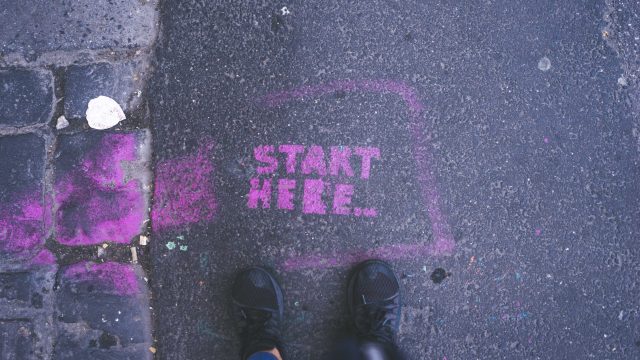Whether you’re a new or experienced online arbitrageur using FBA, one of the most important things to consider when trying to sell your products is how well they are optimized. Online arbitrage is about selling products that are already out there – you aren’t private labelling your own products. Because of this, there is often stiff competition from other sellers trying to sell the exact same items. If you don’t optimize your listings, they won’t stand out from the pack and you will struggle to sell your products. This makes correct optimization absolutely crucial for all online arbitrageurs.

A point to note is that in theory, Amazon restricts each product to a single listing. However, in practice, everyone knows that this is not always adhered to.
It’s worth remembering that unless you have the commercial rights to a product, you cannot claim the product listing for yourself. However, you can edit an existing listing that you are looking to sell on, so that it becomes more likely for you to sell on the products you have bought. Of course, this means that other sellers on the listing could also get the benefit of your hard work, but there are circumstances in which this is worthwhile.
We know getting your Amazon FBA business to succeed can be tough, but luckily at SourceMogul we’re experts at this, and we’ve put together this handy guide where we discuss what we mean by optimizing your products, why it matters and why it should form part of your strategy for success.
Why do we need to optimize our Amazon listings?
Optimizing your listing on Amazon is the process of making your products more visible when people search for them. A really basic example of this is that you might be selling a camcorder. A camcorder can be called a few different things – some might call it a video camera, some might call it a video recorder.
The point is, if you only use the word “camcorder” in your listings, you might find that your listing isn’t as visible to someone who searches for a “video camera”. Again, this is a really basic example and proper optimisation takes into consideration a lot more than this.
Customers will usually find Amazon products through two main methods:
- Using a search engine such as Google
- Directly searching for a product on Amazon
Amazon has hundreds of thousands of products available for sale, which makes selling in that space incredibly competitive. This is why you need to optimize – because if you do, you’ll likely appear higher than someone who doesn’t. And the higher you appear, the more chance you have of winning the sale.
Optimizing products is well worth it, as you’ll likely see:
- Increased traffic to your products as more customers will be able to find your listing amongst all the others.
- An increase in your overall product visibility because your products are more relevant to customer searches
- A higher conversion rate because your products will be more relevant to the searches your shoppers are making
- Overall improvements to your Amazon seller ranking as your sales on Amazon increase
It’s also important to remember that by properly optimizing your Amazon product listings, you stand a better chance of winning Amazon badges such as the Bestseller Badge and the Amazon Choice badge, and both of these badges increase the likelihood that you’ll sell more products.
Now, we’ve mentioned that customers find products through search engines like Google and Bing as well. For the purpose of this article, we’re going to be talking about the listing optimization process just for Amazon – as search engine optimization is a whole different kettle of fish. However, a lot of the actions we suggest here will make it more likely your listings will appear higher on Google and Bing as well.
How to optimize your Amazon product listings
Let’s get into how to actually do the optimization. Our optimization method looks at the following things:
- Product keywords
- Product titles
- Product description
- Product features (bullet points)
- Product image
Each of these elements are considered by the Amazon search algorithm, and by optimizing them, you can influence how visible (or not, as the case may be) your products are to prospective buyers. Amazon also has a tool within Seller Central called the Listing Quality Dashboard, which lets you assess the quality of your product listings and suggests areas that you need to improve, so this is well worth looking at.
In the next section of this article we’re going to take a look at each of the elements of your product listings and help you identify how to improve each one of them.
By the way – this article assumes you’ve already sourced and purchased a product. If you need some help sourcing products, we’d highly recommend signing up to a 7-day free trial of SourceMogul, which will scan hundreds of retailers for millions of products and show you the most profitable online arbitrage opportunities.
Research keywords for your product
Your keyword research phase is probably the most important step when it comes to optimizing your Amazon products, as it forms the foundation of many other sections to follow.
Most searches on Amazon start in the search bar, with potential buyers typing in the sort of product they are looking for. This is where your keywords come into play because you need to try and get the product you’re selling to match the search terms your customers are looking for as closely as possible.
There’s two types of keywords we’re going to be looking out for – short tail keywords and long tail keywords.
Short-tail keywords
Imagine you’ve got some stock of rose scented candles which SourceMogul found for you at Walmart for a good price and want to sell on Amazon. Short-tail keywords in this case are going to be words like “candle” or “scented candles”. Although these do describe your product, they are also very broad. Broad terms like this are often used by people browsing generally rather than looking for a specific product. This means your product is going to appear amongst a wide range of other candles making them less likely to sell.
However, generally short tail keywords have higher volume than long tail keywords, making it worthwhile to rank for them. Even if you only manage to convert 1% of people searching for “scented candles”, if there are 20000 people every month searching for “scented candles”, that’s a viable business model.
Long-tail keywords
These keywords will generally be made up of short phrases which give a better more specific description of your product. In the case of your scented candles examples might be: “rose scented beeswax candles in jars” or “rose scented candles for home”. These long-tail keywords are more likely to convert because they are more closely related to specific products users are searching for.
The downside is that the longer your keywords are, (generally) the lower the search volume will be. So you might be able to convince 50% of people searching for “rose scented beeswax candles in jars” to buy your product, but if there are only ten people every month searching for this phrase, you won’t be selling huge volumes.
In order to correctly optimize your product, you’re going to have to use both types of keyword, but in slightly different ways.
Identifying relevant keywords
So how do you identify relevant keywords for your products? A great place to start is with the Amazon search bar itself, as it’s got some great autofill suggestions which give you a good idea of what other keywords people have used when searching for similar products.
Start by typing in a couple of words relevant to your product e.g. “beeswax candles” or “scented candles” and take a note of what results are returned in the search bar. See if the search bar returns longer phrases or recommends other categories that you might not have considered.
Start to investigate some of these search results and see what products appear for each and then look to see what words or phrases are used in the descriptions of these products. Remember these are potentially going to be your competitors, so your listing needs to be as detailed or better than theirs.
You might repeat the above steps multiple times as you start to find new products or categories that are relevant to the product you’re selling. As you go you should list these words and phrases down because you’ll need them in the next few steps.
The next step would be to use a tool to identify the search volume of the keyword. There are a number of tools you can use to do this, but it’s a very worthwhile step to do, as you need to ensure you aren’t just guessing what people might be searching for – while you might think a certain keyword is very relevant, if nobody searches for it, it’s not worth optimizing for.
How to create an optimized product title
Your product title is effectively going to be the ‘make or break’ part of your product detail page. If it doesn’t match what your customers are searching for, they’re not going to click on it and you’ve lost a valuable sales opportunity.
Your title should take into consideration the keywords you’ve identified, whilst also being descriptive of what the product is. On Amazon you have a bit more liberty to include descriptive elements in the title than you would on, say, eBay, so it’s important to use this to your advantage as much as possible.
Your Amazon product title should:
Be descriptive
You need to include as much information as possible in your product title while also ensuring it’s easy to read. Take a look at other listings you’ll appear against to see if your product title matches others alongside it. There are some very long titles that appear on Amazon so you need to ensure your title is long enough to include enough relevant information without being too long that it’s difficult to read.
Include your keywords
Aim to catch the keywords you identified during your keyword research phase. You don’t want to stuff your title with all the keyword phrases you’ve found if they aren’t all relevant, but if you can naturally include some of your long-tail keywords you’re in for a good start.
Match the actual packaging of your product
If appropriate you should specify the packaging that your product comes in. For example if it has a gift box or gift bag, include that.
Use numerals rather than writing out numbers
If your product has any numbers in the title, use numerals rather than writing them out. This helps keep your title length down, but also makes it easier to scan.
Use abbreviations if appropriate
If you want to discuss measurements use “in” instead of “inches”. Again this will help keep your title length down, but will also make it easier to read.
Use punctuation
If necessary you can include proper punctuation such as commas, ampersands, and periods in your title.
Include the brand name
If appropriate include the brand name of your product at the beginning of your title. If your product is generic and doesn’t have a brand it’s fine to leave out.
Your Amazon product title should not:
Feature all capital letters
Unless using a brand name which specifies using all capital letters, you should not capitalize your entire product title. Instead, you should capitalize the first letter of each word other than for prepositions, conjunctions or articles.
Include non-language symbols
Don’t include any symbols such as copyright symbols (©) or smiley faces (☺) in your title.
Not use any language that is not descriptive of the product
Your title is not allowed to contain any words which could be interpreted as endorsement of the product, such as ‘The Best’ or ‘Best Seller’. It can only include words which specifically describe the product in an unbiased way.
By following the advice above your product stands a good chance of catching the eye of potential customers. Failing to do so could mean your listing doesn’t make it onto page 1 of the relevant search results or even worse fall foul of Amazon’s naming guidelines.
Examples of well optimized Amazon product titles:
“12 x Scented Candles Gift Set, Soy Wax Candle of Jasmine, Pear & Freesia, up to 60 hours burn time”
“Russell Hobbs Multifunction Upright Steam Cleaner Mop, Kills 99% of Bacteria | Steamer for Hard Floors, Carpets, Bathroom and Kitchen”
“Miele 12029900 Classic C1 Junior Bagged Cylinder Vacuum Cleaner with High Suction Power, Universal Floorhead, Lightweight Design, Tech Blue”
Examples of poorly optimized Amazon product titles:
“Apple MacBook Air 2023”
“Kryptonite Bike Lock Bicycle Locker”
“Indoor Cat Bed with HANGING TOY, ANTI-SLIP KITTEN TENT”
How to create an optimized product description
Your product description is where you can really go to town when helping customers understand why your product is the right one for them. They’ve already clicked on your product, so the hardest part is already done. Now you need to sell it to them using as much detail as you can.
Your product description needs to be descriptive, whilst also trying to make your product sound as appealing as possible and remaining factual at the same time. You might want to consider including some of the following things:
Include your keywords
In the same way as your product title, you should aim to include some of your keyword phrases within your product description. Try to keep these natural and work them organically into your sentence structure rather than forcing them in where they don’t make sense. By including your keywords in your description you help Amazon understand why your product is relevant to certain search results.
Include the product’s USPs
For example with the candles you want to sell, talk about what makes them unique. You could mention the beeswax they’re made of. Is it organic? Does it come from a single farm? Is it harvested by the same 80-year-old beekeeper that’s been doing it for the past 50 years? These are all great things that will help your product stand out from the rest.
Include sizes/colors/variants
If you can include the size of your product somewhere in the description, this helps customers understand if this product is going to be the right size for their needs. If they can’t find this information they’re less likely to buy a product or even worse, buy it and then return it if they find out it’s not right for them. Returns will have a negative impact on your seller rating, so try and avoid them if you can.
Include any other relevant information
Does your product come in different colours? What packaging is included with it? Does it have a gift box? How many items are in each package? These are all relevant factors that you should aim to include in your product.
Use positive language
When trying to sell a product, positive and inspiring language can really make a difference. Using positive adjectives such as “beautiful”, “powerful” and “bright” within your product description help your customers engage with your product, therefore making it more likely that they’ll purchase it.
Don’t get too “sales-y”
There’s a fine line between making your product descriptions sound appealing and them sounding too pushy and sales focussed. Take a look at how other similar amazon sellers position their products to give you an idea of the tone that you should be using and try to mimic that. You might have to adapt this tone if you’re selling different categories of products – what works for candles may not work for car parts.
How to create optimized product features
Most Amazon listings will feature a selection of high quality bullet points as part of the product details page. These are a great way to highlight the core features to customers that may not want to read the full product description. As a guide you should adhere to the following principles:
Try and include 5 bullet points for each product
- Each bullet point should be no more than 200 characters long
- Use key features of the product that you think will help sell your product
- Include the dimensions of the product
- Include whether there are any age restrictions to the product
For example the bullet points for our scented candles might look something like this:
- Made with 100% Beeswax and Pure Essential Oil
- Minimally Filtered Beeswax with a Mild Rose Scent
- Free of Soy, Fragrances, Paraffin and Other Synthetic or Toxic Fillers
- Handmade in Small Batches
- Dimensions: H:12in, W: 6in, D: 6in
How to optimize your Amazon product images
When talking about food you might have heard the expression “The first bite is with the eye”, This is also true with Amazon listings. Having an attractive and high quality image of your product can initially encourage your customers to click on your listing, but also make them more likely to convert.
Amazon stipulates every product should have at least one image for each product, but ideally, they recommend having six and a video. Now this might not always be achievable, but you should at least try and get as many product images in place as possible.
In a similar way to a detailed product description, having a great range of images can help customers imagine your products in use in their own home, which again increases the likelihood of them buying.
Here’s some best practices you should consider when optimizing your Amazon product listings photography:
- Try to show the product from a variety of angles with shots that show key differences or features of your product.
- Product images should be shot on a white or plain background so as not to distract from the product.
- The product should fill at least 85% of the image. Avoid having large white spaces or areas of dead background space.
- Make sure the product is lit correctly.
- Aim for high quality imagery of at least 72 dpi, with a size of 1600 pixels across the longest edge to further enhance the quality and enable Zoom functionality on the Amazon site.
- Include additional images of your product in use in a natural setting if possible which will help to inspire customers to make a purchase.
- Images can be in one of the following file formats: JPG, PNG, TIFF or GIF.
- RGB should be used for color images instead of CMYK.
- Try not to compress your images before submitting them.
- Further optimize your images using your Amazon Seller Central app. This can be done in the Product Photo Studio section and can be used to correct brightness and exposure as well as for cropping.
Your images are a big factor in the key to your success as an Amazon FBA seller, and if done correctly will have an impact on your overall conversion rates, so it’s a good idea spending some time on them to make sure they’re right. Nobody buys a product where it’s obvious the seller hasn’t bothered to take decent images.
Summing things up
Whether you’re a new Amazon FBA seller or you’ve been doing it for years, there’s no getting away from the fact that you need to optimize your product listings. Doing this is one of the single most important things you can do to have the best chance of your products ranking on Amazon.
By successfully optimizing your products, you’ll see an increase in sales, higher visibility of products, potential increases in your seller rating and also have a better chance of winning a coveted Amazon badge such as the BestSeller or Amazon Choice, which will further enhance your sales capabilities.
The best thing is, it doesn’t need to cost you anything, simply follow the steps we’ve gone through in this article and it’ll help your products stand out from the competition.
Now, there’s only one thing left to do. Go and try it! Good luck!
FAQ’s about optimizing your Amazon listings
Is Amazon listing optimization worth it?
Absolutely. By making sure your Amazon product listings are properly optimized, you can be sure that they stand the best possible chance of your products being seen by the millions of customers shopping on Amazon everyday. You also stand a much better chance of winning the Amazon Choice and Bestseller badges if your products are properly optimised. So it’s definitely worth doing.
How much does Amazon SEO cost?
Amazon SEO (another name for optimizing your products) doesn’t have to cost anything. The most important thing to do is understand which keywords and search terms are relevant for your customers. This will then allow you to optimize your product titles and descriptions accordingly. This process can all be done by using the Amazon search bar, viewing competitor listings and using seller tools on Amazon itself. If you do this thoroughly enough, there’s no need to pay for any of it.
About SourceMogul
SourceMogul is an online arbitrage tool specifically designed to help Amazon FBA sellers find suitable products which they can then resell for profit on Amazon. It searches the inventories of hundreds of the biggest retailers and helps pick out products from the millions available quickly and easily that stand the most chance to make you a profit.
SourceMogul features a range of easy to use analytics tools that show you useful statistics such as product ratings and sales rates of particular products, allowing you to conduct an analysis of sales trends and make an informed decision about which products to buy and which to skip.
Unlike many other Online arbitrage tools available, SourceMogul doesn’t restrict the amount of searches you can conduct each month, meaning you can always stay one step ahead of your competitors.
Sign up for a 7-day free trial of SourceMogul today to find out how it can help you Amazon FBA arbitrage business grow.
More strategy
-

6 steps to becoming an Amazon seller. No experience needed.
Becoming a successful Amazon seller is easy - the Amazon brand and logo represents…
-

Top tips for success from a new Amazon seller
We've compiled a list of the top tips for new sellers, gathered from a…
-

How to get ungated on Amazon – your guide to Amazon restricted categories
If you’re looking to expand your online arbitrage business, you might find yourself tempted…
-

How to prepare for Amazon Q4 trading
Every year the holiday season seems to come around a little earlier. As an…




